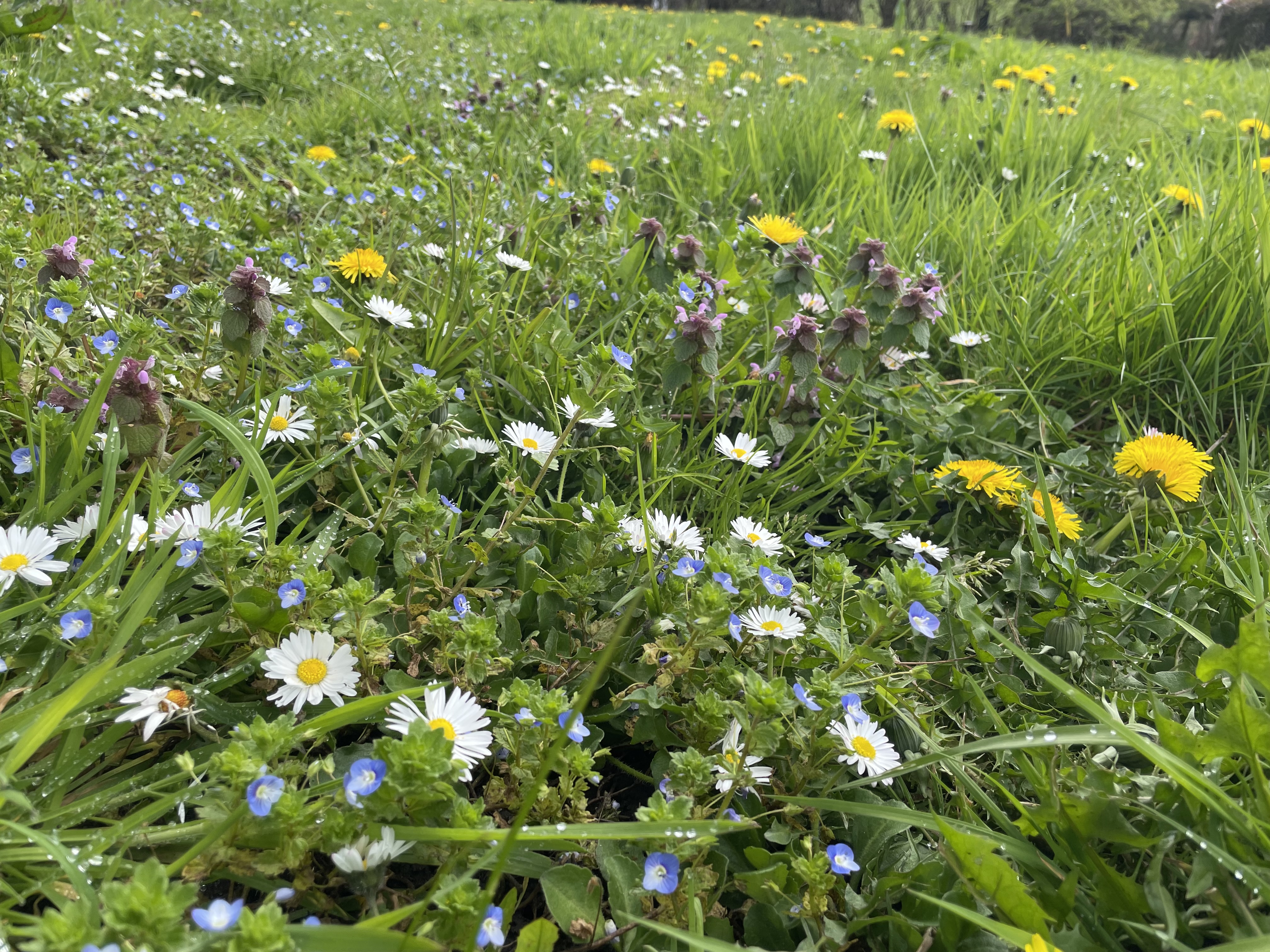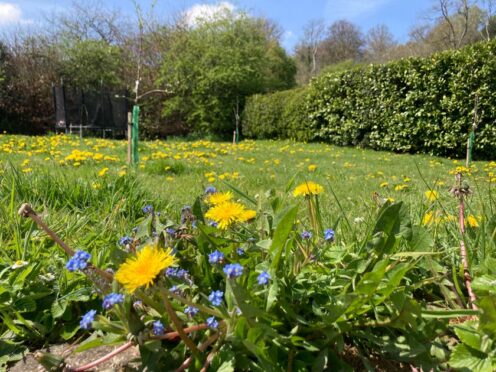Almost half of gardeners do not plan to mow their lawn more than once in May, a survey suggests, as an annual campaign to boost nature in gardens kicks off.
Plantlife’s “No Mow May” campaign urges people to leave the mower in the shed for the month to allow wilder lawns with wildflowers to flourish, helping support bees, butterflies and other wildlife.
The wildlife charity says its message is cutting through, with 46% in a survey of more than 2,000 people with garden lawns saying they will not mow their lawn more than once in May.
A further 33% said they would mow once a fortnight or every three weeks, and less than a fifth (18%) were planning a weekly cut, while just 3% more frequently than that, the polling by Opinion Matters found.

Plantlife also says more councils are backing the move to stop mowing in May, as part of efforts to create space for wild plants and wildlife, and to combat the climate crisis by lowering carbon emissions.
The charity has invited local authorities to show their support for the first time this year, with more than 40 signing up to the No Mow May movement as part of efforts to manage verges and green spaces more for nature, it said.
The polling for Plantlife showed that people understand the importance of wilder lawns for nature, with nearly three-quarters (73%) believing that leaving lawns unmown for a month or more helps butterflies, bees and other wildlife.
And 84% considered it important to look after the environment and support conservation efforts in their everyday lives.
Less than a fifth (17%) thought maintaining a neat appearance to their lawns through regular mowing was more important than supporting wildlife by letting the lawn grow more.
Ian Dunn, chief executive of Plantlife, said: “Support for Plantlife’s campaign is blossoming beautifully as people recognise the benefits to plants, people, pollinators and planet of mowing less and later for nature.
“The small act of giving the mower a month off, and then mowing less through the summer, can make a big difference at a time when we face interlinked climate and biodiversity emergencies.”
Plantlife says there could be a significant impact from providing wilder grass habitat – even if it is just a small patch of lawn – across millions of gardens in the UK.
Around 97% of wildflower meadows have been lost in less than a century, with once widespread plants such as ragged Robin and field scabious now on the near threatened list in England, the conservation organisation warns.
Sarah Shuttleworth, senior ecological advisor at Plantlife, said: “No Mow May matters massively because leaving lawns to just let it be in May allows a wonderful array of wild plants to flower and flourish.
“This floral diversity provided by more relaxed mowing regimes provides a rich food source for a wealth of wildlife through the summer.”

Wildflowers on a lawn can provide food for bees and other insects (Archie Thomas/ Plantlife /PA) /caption]
After No Mow May, Plantlife recommends less frequent mowing through the summer.
It also encourages gardeners to avoid herbicides, fertilisers and moss killer as all can be detrimental to wild plants in the lawn, allow plants time to set seed before mowing, and remove grass cuttings following mowing to prevent nutrient build-up on the grass.
Providing a mix of habitats also helps wildlife, with shorter lawns with clover in providing food for bumblebees, while longer grasses are an essential resource for certain species of butterflies and moths, Plantlife said.
Plantlife said a mixture of shorter grass and taller more structural areas will boost flower diversity and support other garden wildlife.
Mowing twice a year will maintain a meadow and mowing every four to six weeks will create a shorter reflowering lawn where plants such as bugle, selfheal, red clover and lady’s bedstraw can thrive, the charity said.
No Mow May comes after research by another wildlife charity Butterfly Conservation found leaving a patch of grass in the garden to grow long boosted butterfly numbers, particularly in towns or areas of intensive agriculture.
